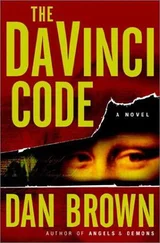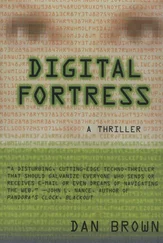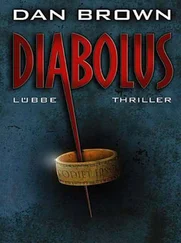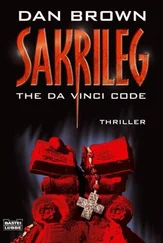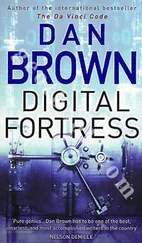“Xavia,” Tolland said. “It’s Mike.”
The geologist spun, swallowing part of a prepackaged sandwich she was eating. “Mike?” she stammered, clearly stunned to see him. She stood up, turned down the television, and came over, still chewing. “I thought some of the guys had come back from bar-hopping. What are you doing here?” Xavia was heavyset and dark-skinned, with a sharp voice and a surly air about her. She motioned to the television, which was broadcasting replays of Tolland’s on-site meteorite documentary. “You sure didn’t hang around on the ice shelf very long, did you?”
Something came up, Tolland thought. “Xavia, I’m sure you recognize Corky Marlinson.”
Xavia nodded. “An honor, sir.”
Corky was eyeing the sandwich in her hand. “That looks good.”
Xavia gave him an odd look.
“I got your message,” Tolland said to Xavia. “You said I made a mistake in my presentation? I want to talk to you about it.”
The geologist stared at him and let out a shrill laugh. “That’s why you’re back? Oh, Mike, for God’s sake, I told you, it was nothing. I was just pulling your chain. NASA obviously gave you some old data. Inconsequential. Seriously, only three or four marine geologists in the world might have noticed the oversight!”
Tolland held his breath. “This oversight. Does it by any chance have anything to do with chondrules?”
Xavia’s face went blank with shock. “My God. One of those geologists called you already?”
Tolland slumped. The chondrules. He looked at Corky and then back to the marine geologist. “Xavia, I need to know everything you can tell me about these chondrules. What was the mistake I made?”
Xavia stared at him, apparently now sensing he was dead serious. “Mike, it’s really nothing. I read a small article in a trade journal a while back. But I don’t understand why you’re so worried about this.”
Tolland sighed. “Xavia, as strange as this may sound, the less you know tonight, the better. All I’m asking is for you to tell us what you know about chondrules, and then we’ll need you to examine a rock sample for us.”
Xavia looked mystified and vaguely perturbed to be out of the loop. “Fine, let me get you that article. It’s in my office.” She set her sandwich down and headed for the door.
Corky called after her. “Can I finish that?”
Xavia paused, sounding incredulous. “You want to finish my sandwich?”
“Well, I just thought if you—”
“Get your own damn sandwich.” Xavia left.
Tolland chuckled, motioning across the lab toward a specimen cooler. “Bottom shelf, Corky. Between the sambuca and squid sacs.”
Outside on deck, Rachel descended the steep stairway from the bridge and strode toward the chopper pad. The Coast Guard pilot was dozing but sat up when Rachel rapped on the cockpit.
“Done already?” he asked. “That was fast.”
Rachel shook her head, on edge. “Can you run both surface and air radar?”
“Sure. Ten-mile radius.”
“Turn it on, please.”
Looking puzzled, the pilot threw a couple of switches and the radar screen lit up. The sweep arm spun lazy circles.
“Anything?” Rachel asked.
The pilot let the arm make several complete rotations. He adjusted some controls and watched. It was all clear. “Couple of small ships way out on the periphery, but they’re heading away from us. We’re clear. Miles and miles of open sea in all directions.”
Rachel Sexton sighed, although she did not feel particularly relieved. “Do me a favor, if you see anything approaching—boats, aircraft, anything—will you let me know immediately?”
“Sure thing. Is everything okay?”
“Yeah. I’d just like to know if we’re having company.”
The pilot shrugged. “I’ll watch the radar, ma’am. If anything blips, you’ll be the first to know.”
Rachel’s senses were tingling as she headed for the hydrolab. When she entered, Corky and Tolland were standing alone in front of a computer monitor and chewing sandwiches.
Corky called out to her with his mouth full. “What’ll it be? Fishy chicken, fishy bologna, or fishy egg salad?”
Rachel barely heard the question. “Mike, how fast can we get this information and get off this ship?”
Tolland paced the hydrolab, waiting with Rachel and Corky for Xavia’s return. The news about the chondrules was almost as discomforting as Rachel’s news about her attempted contact with Pickering.
The director didn’t answer.
And someone tried to pulse-snitch the Goya ’s location.
“Relax,” Tolland told everyone. “We’re safe. The Coast Guard pilot is watching the radar. He can give us plenty of warning if anyone is headed our way.”
Rachel nodded in agreement, although she still looked on edge.
“Mike, what the hell is this ?” Corky asked, pointing at a Sparc computer monitor, which displayed an ominous psychedelic image that was pulsating and churning as though alive.
“Acoustic Doppler Current Profiler,” Tolland said. “It’s a cross section of the currents and temperature gradients of the ocean underneath the ship.”
Rachel stared. “That’s what we’re anchored on top of?”
Tolland had to admit, the image looked frightening. At the surface, the water appeared as a swirling bluish green, but tracing downward, the colors slowly shifted to a menacing red-orange as the temperatures heated up. Near the bottom, over a mile down, hovering above the ocean floor, a blood-red, cyclone vortex raged.
“That’s the megaplume,” Tolland said.
Corky grunted. “Looks like an underwater tornado.”
“Same principle. Oceans are usually colder and more dense near the bottom, but here the dynamics are reversed. The deepwater is heated and lighter, so it rises toward the surface. Meanwhile, the surface water is heavier, so it races downward in a huge spiral to fill the void. You get these drainlike currents in the ocean. Enormous whirlpools.”
“What’s that big bump on the seafloor?” Corky pointed at the flat expanse of ocean floor, where a large dome-shaped mound rose up like a bubble. Directly above it swirled the vortex.
“That mound is a magma dome,” Tolland said. “It’s where lava is pushing up beneath the ocean floor.”
Corky nodded. “Like a huge zit.”
“In a manner of speaking.”
“And if it pops?”
Tolland frowned, recalling the famous 1986 megaplume event off the Juan de Fuca Ridge, where thousands of tons of twelve hundred degrees Celsius magma spewed up into the ocean all at once, magnifying the plume’s intensity almost instantly. Surface currents amplified as the vortex expanded rapidly upward. What happened next was something Tolland had no intention of sharing with Corky and Rachel this evening.
“Atlantic magma domes don’t pop,” Tolland said. “The cold water circulating over the mound continually cools and hardens the earth’s crust, keeping the magma safely under a thick layer of rock. Eventually the lava underneath cools, and the spiral disappears. Megaplumes are generally not dangerous.”
Corky pointed toward a tattered magazine sitting near the computer. “So you’re saying Scientific American publishes fiction?”
Tolland saw the cover, and winced. Someone had apparently pulled it from the Goya ’s archive of old science magazines: Scientific American, February 1999. The cover showed an artist’s rendering of a supertanker swirling out of control in an enormous funnel of ocean. The heading read:
Megaplumes—
Giant Killers from the Deep?
Tolland laughed it off. “Totally irrelevant. That article is talking about megaplumes in earthquake zones. It was a popular Bermuda Triangle hypothesis a few years back, explaining ship disappearances. Technically speaking, if there’s some sort of cataclysmic geologic event on the ocean floor, which is unheard of around here, the dome could rupture, and the vortex could get big enough to... well, you know...”
Читать дальше

